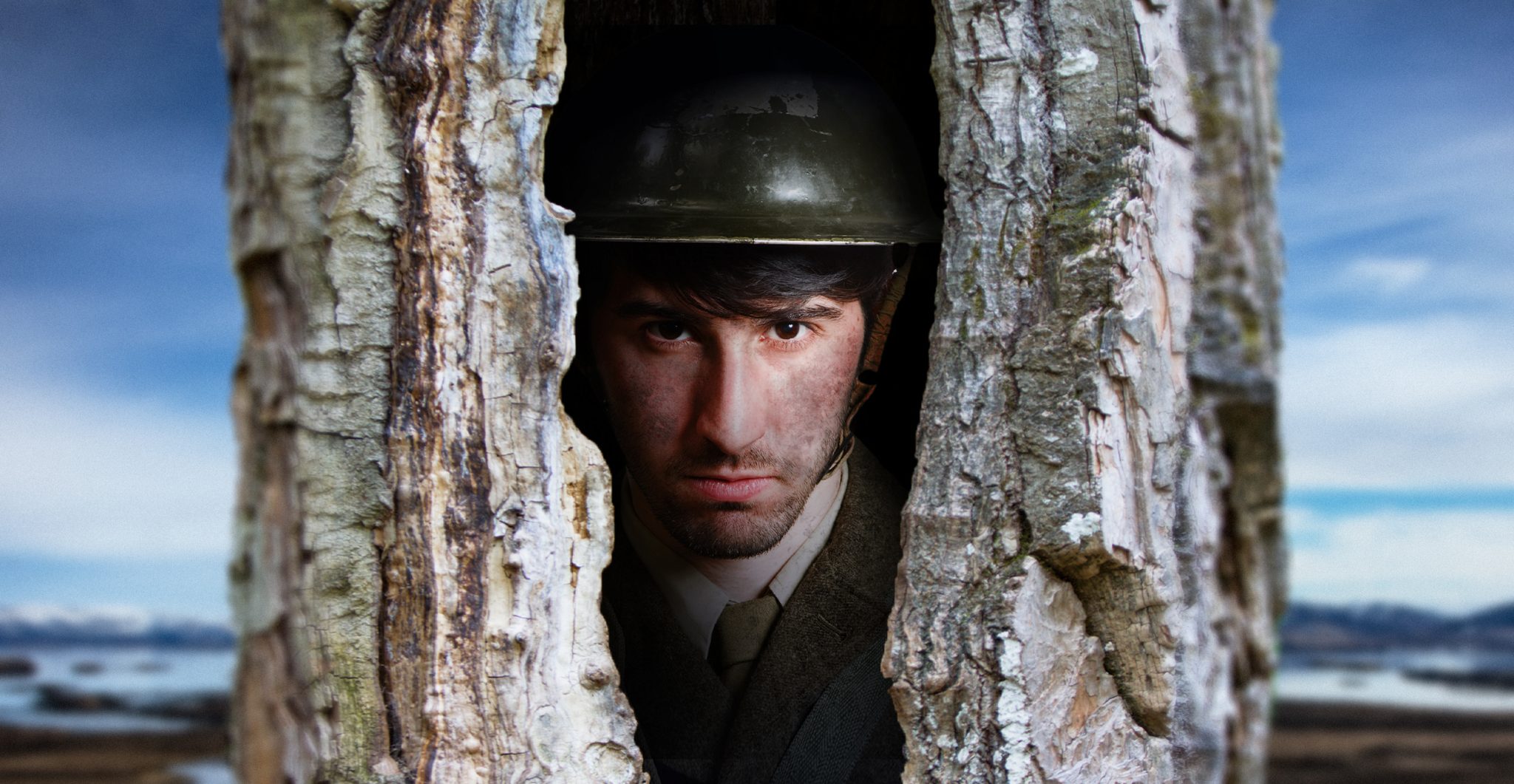WWI: a war unlike any other
World War One was a war of the modern age. Not only did it introduce completely new perspectives on combat, but it also brought to bear weapons and tactics that had never been seen before.
For the first time in history, airplanes took off to fight in the air, tanks rolled onto the battlefields, and the mist of poison gases filled trenches. The massive maneuvers of large unit formations of the 19th century were replaced by positional warfare.
Instead of charging with bayonets fixed to their rifles, soldiers limited their actions to trenches and fighting for “no man’s land.”
Down the length of the Western Front, any attempt to cross “no man’s land” was a highly risky venture. It was dangerous even to stick your head above the trench parapet. Snipers and artillery guns were a constant threat.
Life and combat under such conditions created a need to conceal both men and their weapons.
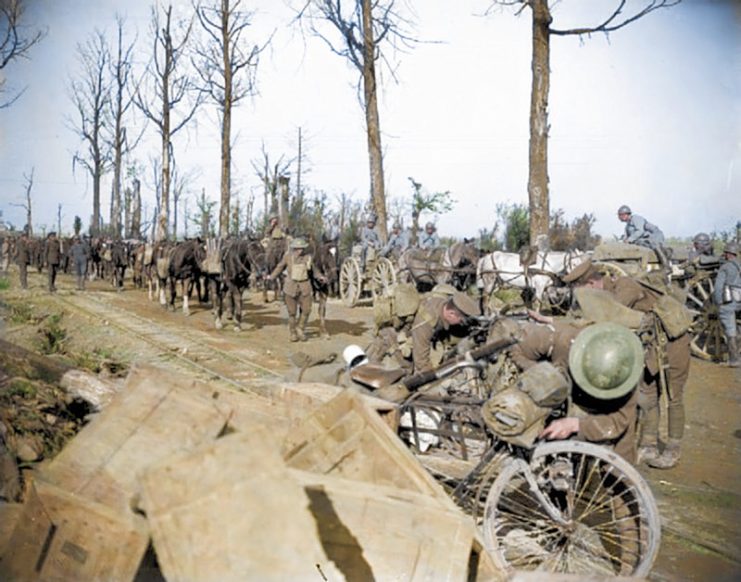
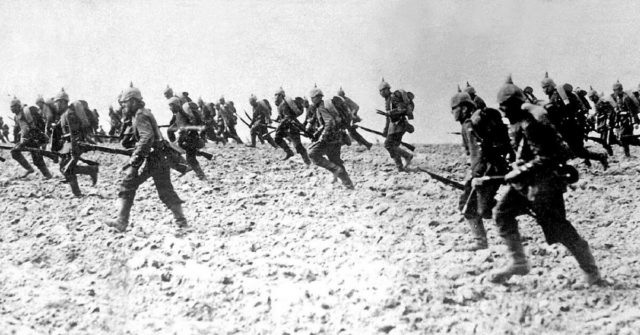
Even though familiar to people of ancient times, it was not until the First World War that became a systematic effort. Very often verging on the bizarre, the skill was developed with great ingenuity.
One such example was the fake tree – a true monument of World War One.
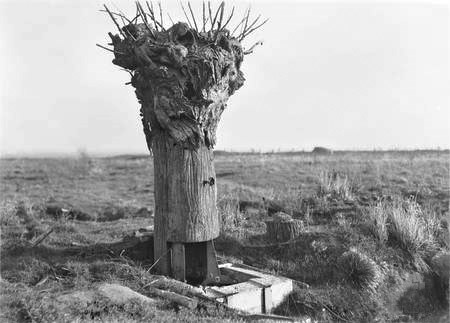
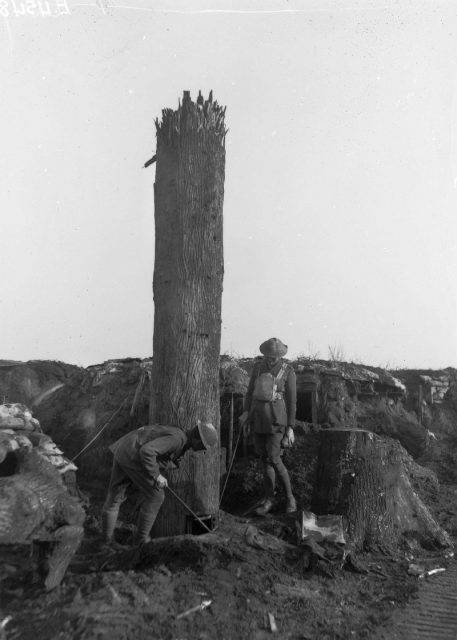
Artists on war service
It didn’t take long for all the belligerents to realize the importance of camouflage in war. To make most out of it, masters of the visual arts were brought in for the job.
The first nation to embrace camouflage was France. It was the department of “camoufleurs,” led by painter Lucien-Victor Guirand de Scévola that invented the first fake tree. They put it to use during the Battle of Artois in late 1914 as an observation point for directing artillery fire.
Even though the project proved to be a success, it was still just the beginning. It was a costly innovation since 15 camoufleurs were killed on the frontlines while installing fake trees.
The French, being the pioneers in war camouflage, were approached by the British, who took the art of concealing to a higher level.
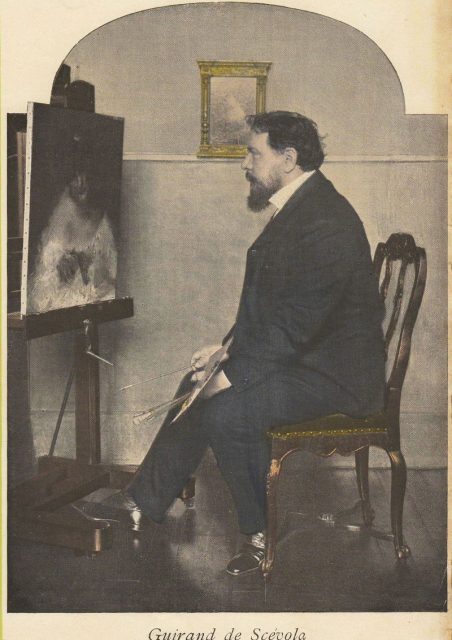
Solomon Joseph Solomon
In the beginning, one name stood out when it came to applying camouflage for the purposes of war: Solomon Joseph Solomon. A London-born painter, Solomon was, at the outbreak of war, already known for conducting camouflage experiments in his Woolwich workshop.
When the war started, Solomon was convinced that his ideas would be of great help in winning the war. After spending weeks knocking on doors of the War Office in order to promote the importance of camouflage, military authorities decided to give him a chance.
In December 1915, Solomon was sent to France to learn the trade from the camoufleurs over there. He carefully studied the techniques that the French used in building realistic-looking fake trees.
The job went smoothly as Solomon knew most of them from the École des Beaux-Arts in Paris. Not only did Solomon learn the trade from the French, he also made plans on how to improve it.
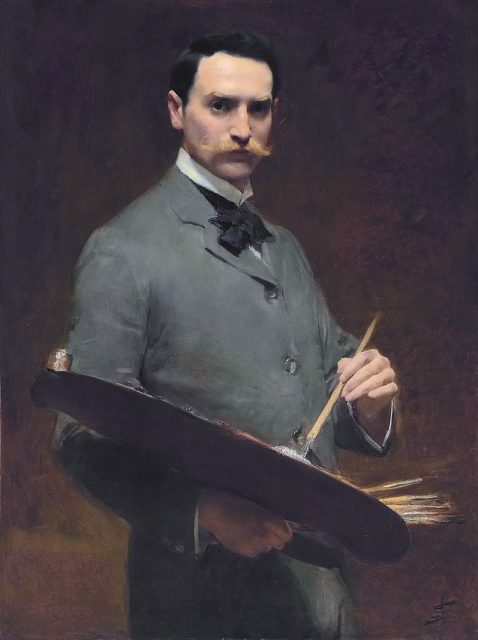
After returning to London and showing his ideas to the War Office, Solomon was finally given the green light to implement his plans.
Having been given the rank of Lieutenant Colonel, Solomon gathered a team of five men, all of whom had the necessary skills to participate in various camouflaging projects.
Their first task was to build a fake tree.
It was January of 1916 when Solomon and his crew came to France and established a workshop in a former feldspar factory in Wimereux near Boulogne. Two months later, the first fake British tree was planted.
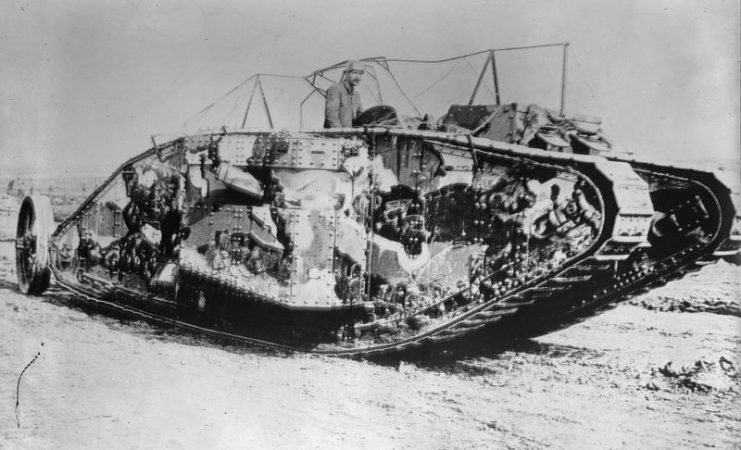
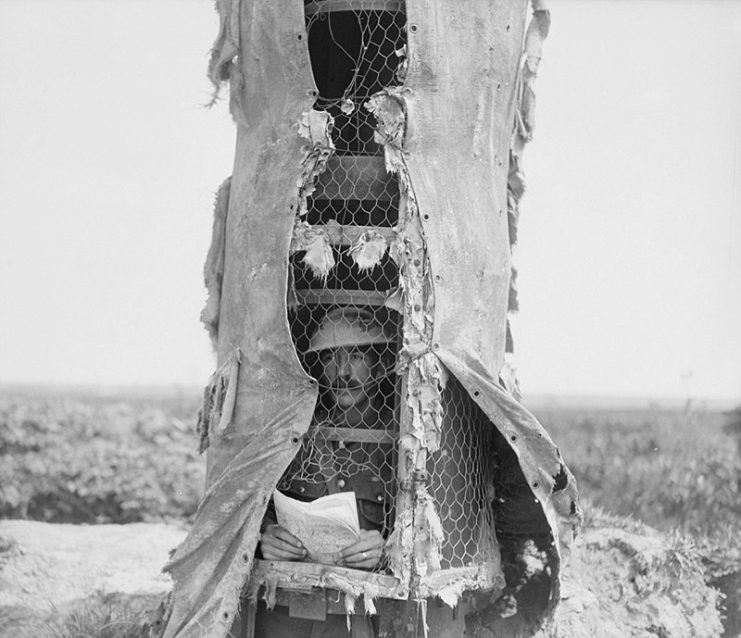
O.P. Trees
Solomon had no intention of building a fake tree that would simply resemble a real one. He wanted to pick a tree out there on the front lines and make its exact copy. For this purpose, Solomon engaged a unit of sappers to look for proper trees, preferably ones that were blasted by an explosion.
After picking the tree that suited all requirements, a draftsman from his team made a detailed sketch of it. Based on these sketches, Solomon and the rest of the team built what they called an “Observation Post Tree” or, put simply, an O.P. Tree.
The O.P. Tree consisted of a steel tube that was 10 to 15 ft (3 to 4.5 meters) high. It was wide enough for one soldier to climb up internal rope ladders and reach the seat at the top of the tube.
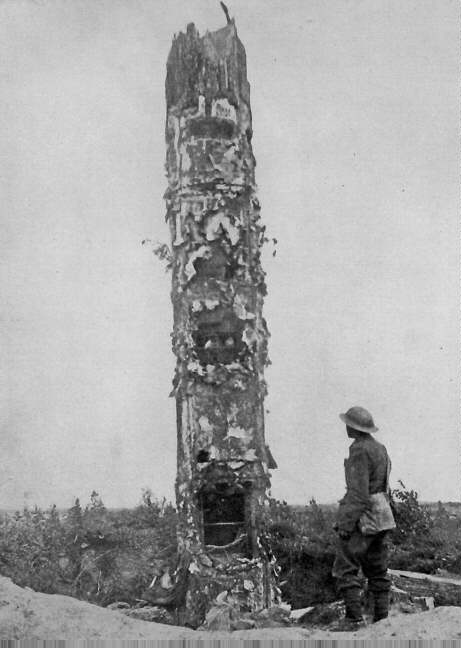
Once at the top, the soldier was able to observe the surrounding area through specially made slits covered with a wire net. The soldier inside the tree was in constant contact with his superior officer, either by using a telephone line or couriers.
The outward appearance of the O.P. Tree was a true work of art.
To make his copy of a tree as authentic as possible, Solomon thought it was best to use natural materials such as tree bark. He took large sections and strips of bark then sewed or glued them to a canvas which could then be wrapped around the steel tube.
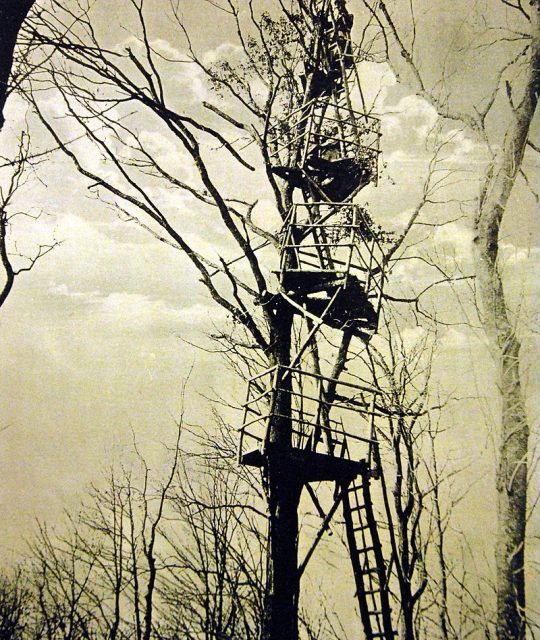
King George’s willows
When he was in the process of making his first tree, Solomon feared that the enemy might find out about his project. It was for that reason he didn’t use the bark from the first tree he found.
Instead, he had a daring idea to ask King George himself for permission to use the bark of a willow from his garden at Windsor Castle. After all, if anyone can be trusted to keep a secret, it was the king.
King George agreed, so Solomon and his men went to his estate and used a bark of one old willow to make a cover for their fake tree.
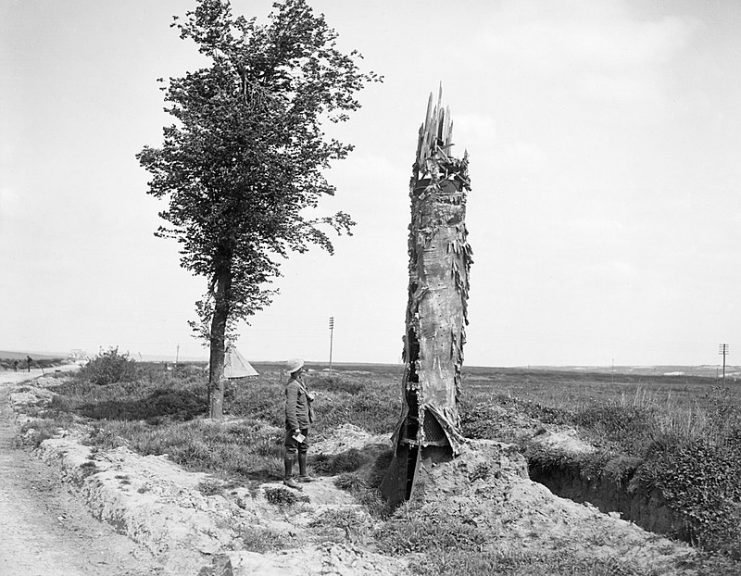
Planted at night
Installing the O.P. Tree was no easier than building it. Since the entire operation had to be performed without being noticed by the enemy, it was only possible to erect the tree at night.
As soon as darkness fell, engineers cut down the tree that they had previously picked for replacement and dug a hole where the roots had been. To conceal the sounds of engineers at work, the entire operation was covered by the sounds of artillery.
A new fake tree was erected, and everything looked the same when the sun rose.
The first O.P. Tree was placed on March 12, 1916, on the front line near Ypres. After that, many were built in the same manner along the entire front. These fake trees were used both for directing artillery fire and as sniper nests.
Ideally, trees were installed among real trees to make them more difficult for the enemy to spot.
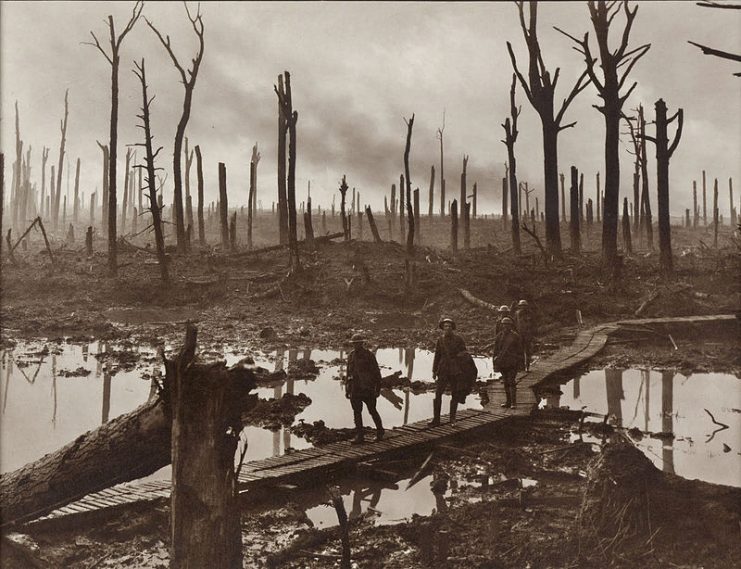
Baumbeobachter
At first, the Germans were unaware of the existence of these O.P. Trees, but they soon became wise to the trickery of their enemies. Consequently, they began to build their own fake trees. These were called baumbeobachter, meaning “tree observer.”
German fake trees were quite similar to British ones in their overall structure. The Germans also strived to make perfect copies of existing trees and used natural materials to build fake bark. Being highly professional in everything they do, some baumbeobachters were real pieces of art.
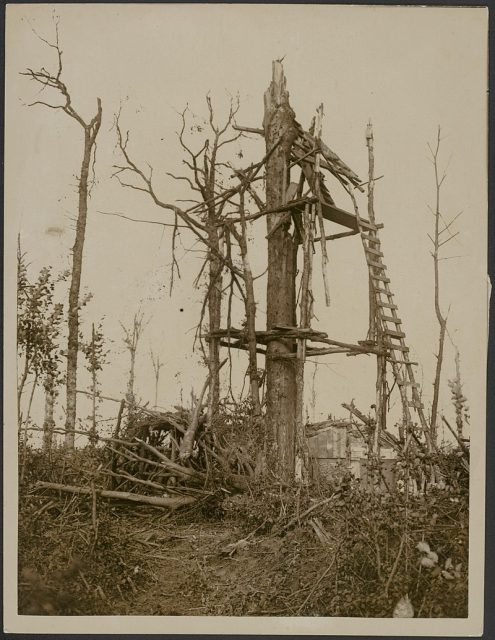
One fake tree was placed in the Oosteverne Woods in Belgium. Since it was placed between other trees which had been destroyed by artillery fire, it was fairly difficult to recognize as fake.
Read another story from us: Military Magic – The Unseen Art of Camouflage
During the battle of Messines, British troops managed to push the Germans out of the forest and seize their positions. For several weeks afterward, British soldiers spent their free time next to the tree, not realizing that the tree was fake.
It was only when they accidentally found the hole at the bottom that they realized it was actually a camouflaged observation post.
